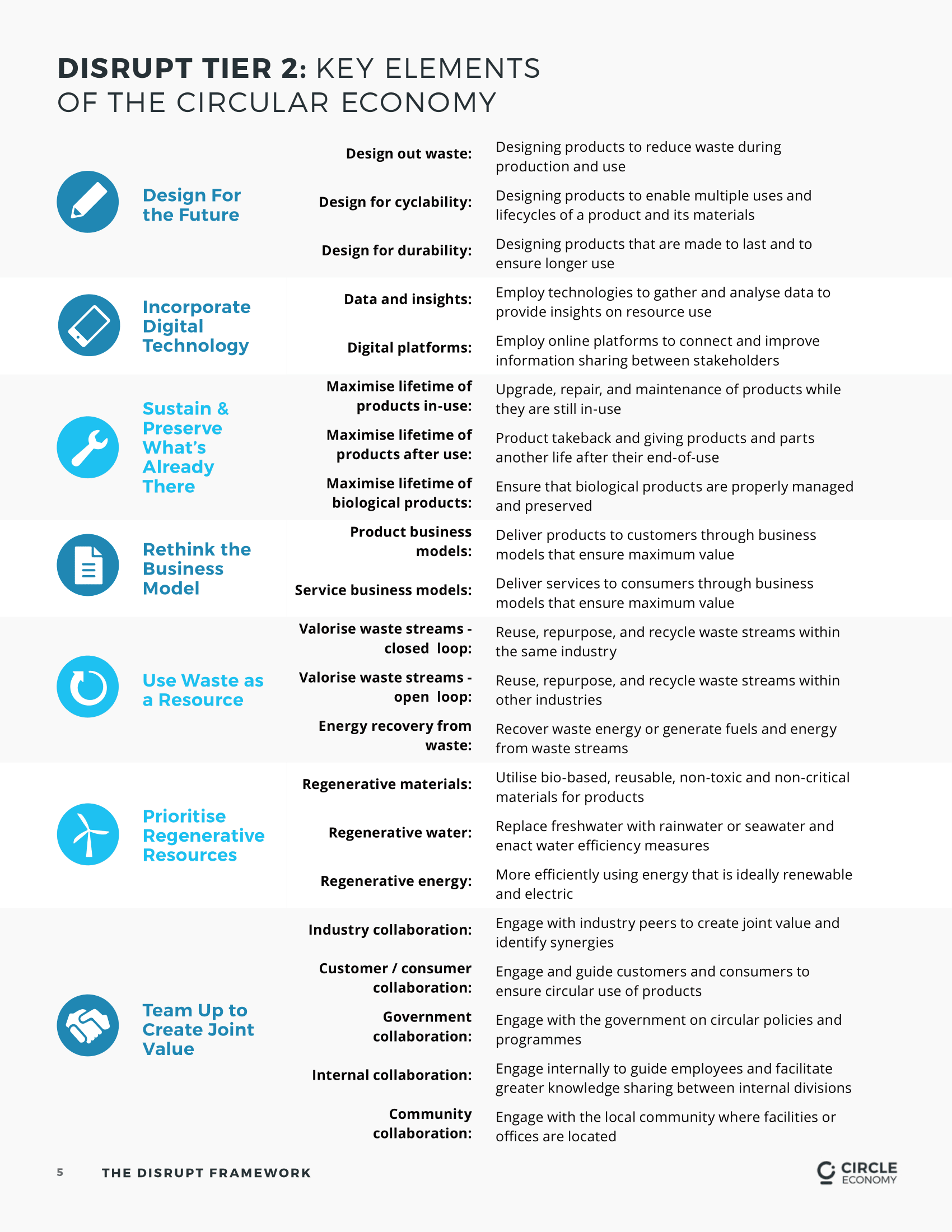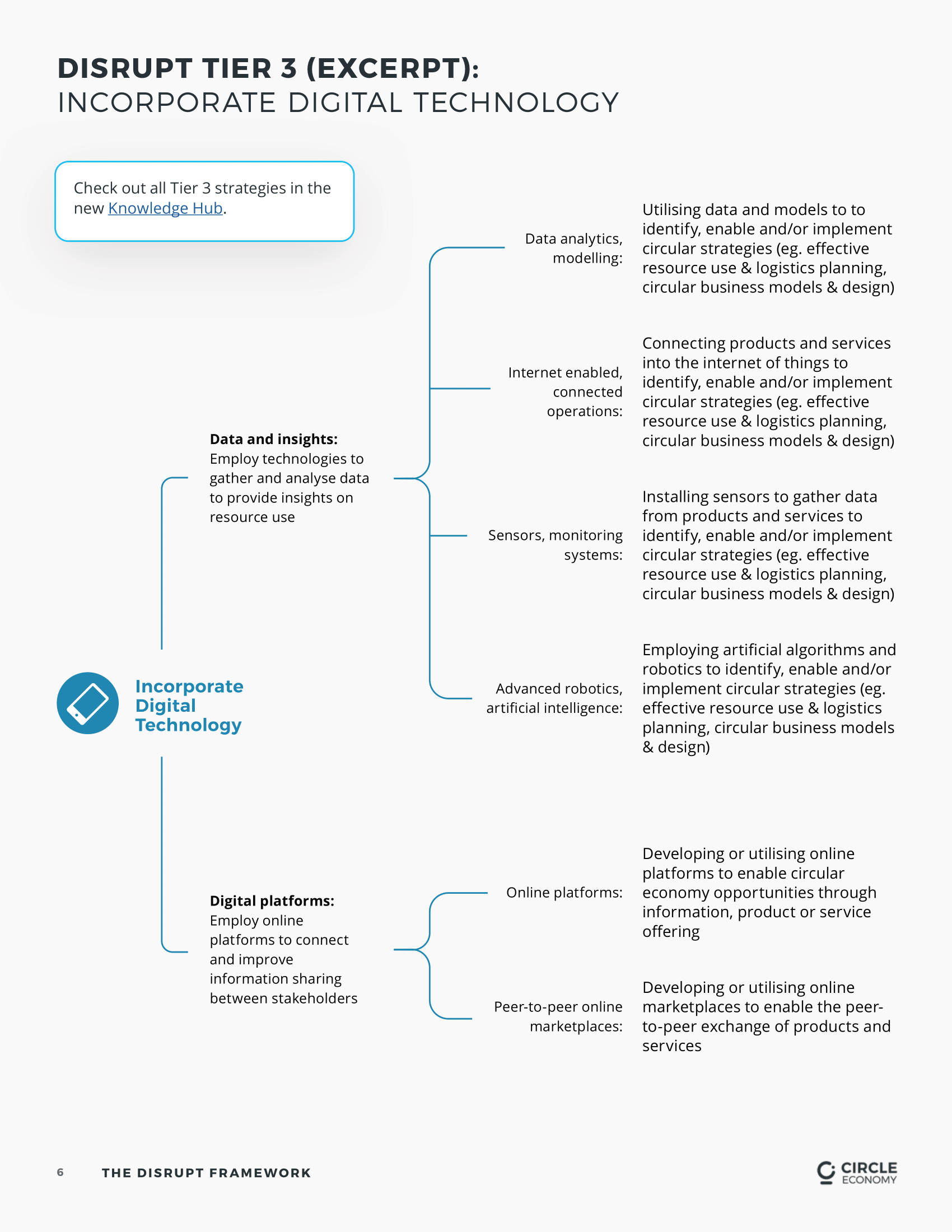.svg)
We, as individuals, buy products to fulfil our needs, from houses to food to electronics and other consumables. In powering our lifestyles with products, we use resources and produce emissions, thereby interacting indirectly with the environment and forming our environmental footprints. [1]
In this way, products are a tangible and accessible starting point to initiate circular change. Through products, we can consider the system in which those products operate, how they relate to academia, the public sector and the rest of the private sector, and how those actors and systems have to change to accommodate circular products. [2]
Consider the design and production of a fully recyclable jacket, an impressive feat that can be owned and operationalised by the jacket company. In a circular economy, that jacket would be utilised at its maximum capacity and then cycled into another product. Considering that the company already produced the jacket, what are the role of the citizen, the retailer, and the municipality in ensuring the jacket and its constituents are actually cycled?

The DISRUPT framework is a comprehensive list of circular strategies for products. It includes 80 tangible strategies that provide guidance and inspiration for you to render your product circular. These are wide-ranging: design guidance, decisions concerning inputs, use, and end-of-life, business models and collaboration in the supply chain and in the use of digital technologies to support circularity.
The strategies are clustered to each of the relevant elements in the Key Elements Framework for ease of understanding and search, and therefore by construction, are grouped into core and enabling strategies as defined and used in the Elements.
For reference, core circular strategies concern activities that directly influence material flows: for instance, by selecting alternative inputs, or cycling materials back into the system. Core strategies should be directly linked to performance indicators that reflect the physical volumes of materials, water or emissions.
When applied to products, core strategies would, for example, drive the selection of alternative biobased inputs to replace rarer or more emissions-intensive, yet traditional, materials, such as in the construction sector or for fuels. [3] A further example would be valorising product waste streams to ensure that the material, water and energy flows used to create and consume and dispose of the product are circular such as with organic streams, or plastics. [4], [5]
On the other hand, enabling strategies remove the barriers necessary for core circular strategies to prevail. These strategies encourage the conditions for circularity, but do not bring about a direct alteration to the material flows.
In the context of products, an enabling strategy would establish rental of essentially second hand products which would, potentially but not necessarily extend their life and usage intensity as in some cases such markets lead to an increase in consumption [6]. Another example would be conducting big data analytics on product or material flows which might enable but not necessarily bring about decisions that reduce material usage strategically. This could be for financial, or political, or other practical reasons. [7]
The DISRUPT Framework is for all product stakeholders who are looking to understand what strategies are possible to render products circular. This includes product developers, merchandising specialists, innovation managers, sourcing specialists, designers, product (line) managers and sustainability managers.
The strategies across the DISRUPT Framework can vary in prominence according to each product stakeholder and their own departmental priorities. Through this variance, the Framework can serve as a means to connect stakeholders and departments around circular strategies.
The DISRUPT Framework, thanks to its comprehensiveness, is also useful for researchers to structure information. This could aid, for example, comparative analysis across typologies of organisations.



The DISRUPT Framework is applied at the product level within an organisation. It, therefore, must be reapplied for every product line—although some strategies may have similar considerations in the context of the organisation. For example, procurement policies or available digital infrastructure may be consistent across product lines, but product design specifications or customer interactions will be unique and could even be considered independently.
The framework can also be used to conceptualise an idea in workshops which bring stakeholders together to brainstorm and select strategies that are relevant to investigate in the context of their product and organisation. Within Circle Economy, we use it most prominently in our On Course workshops for Fashion Brands.
The strategies should not be considered a checklist. This means that not every strategy is required to be implemented for a product to be circular. Strategies should be selected to support circularity goals in the context of the product and the organisation. The strategies can be combined in any number of ways to form a roadmap for product strategy development, and the strategies can be used as a means to rally and organise internal and external stakeholders.
We also use the DISRUPT framework across many of Circle Economy’s offerings.In the Circle Assessment Tool, it serves as the basis for self -assessment of circularity, as well as in the Circle Fashion Tool which has a specific application to fashion brands. The framework is in use in the Knowledge Hub—a digital repository of case studies about the circular economy—as a means to categorise case studies concerning circular products.
Lastly, the framework will be implemented in an upcoming Solution Provider Hub as a means to categorise organisations who support the implementation of circular product strategies across different domains.
The DISRUPT Framework was developed alongside the expansion of the Key Elements. Through extensive secondary research and literature review, we gathered case studies, articles and examples—as well as from our own projects and reports—and categorised these to form the strategies, which we then clustered to form the elements.
The elements were then used as a starting point to rederive the detailed strategies. Drawing from the wealth of knowledge across the organisation, gaps were filled via extensive consultations with circular economy experts and the portfolios at Circle Economy. These include expert insights from Textiles, Cities, Built Environment and the Circularity Gap Report, as well as the 2,000+ case studies we uncovered whilst building the Knowledge Hub.
The DISRUPT Framework strives to be a comprehensive set of product strategies, and consequently, it is in continuous development. As it continues to be applied in different contexts, we upgrade and edit strategies with practitioners to ensure a complete and useful set of strategies.
The DISRUPT Framework can currently be applied predominantly to product-based organisations and needs to be revised to better accommodate service organisations. Furthermore, the DISRUPT Framework could be linked to interventions at different system levels, such as how the organisation has to change to accommodate a certain product strategy or examples of policies concerning certain product strategies in different regions or contexts. This would be useful in facilitating a multidimensional understanding of the implications of a certain product.
To support operationalising circular strategies and building the surrounding ‘business case’: the DISRUPT Framework could be extended to house related performance indicators of strategies that can be applied at the organisational level, or more broadly in a city, a region or a nation. The uptake of a core strategy should directly influence metrics concerning material use of the product. In measuring the success of enabling strategies, two tiered performance indicators are required. First to measure the success of the strategy itself, and then to measure its intended effect on physical volumes of materials, water or emissions—and the related core strategy.
And following this, extended again to include impact indicators for each strategy as well, for instance how a strategy contributes towards emissions reduction or even employment opportunities.
[1] Adopting a Circular Business Model: Opportunities and Challenges for the Supply Chain Management
[2] https://www.researchgate.net/profile/Fiona_Charnley/publication/303749092_The_circular_economy_-_a_reappraisal_of_the_'stuff'_we_love/links/57503c2508ae4eed2740bd8b.pdf
[3] https://www.energyagency.at/fileadmin/dam/pdf/projekte/klimapolitik/Carbon_accounting_of_material_substitution_with_biomass__Case_studies_for_Austira_investigated_with_IPCC_default_and_alternative_approaches.pdf
[4] https://www.ncbi.nlm.nih.gov/pmc/articles/PMC2873020/
[5] https://www.sciencedirect.com/science/article/pii/S0959652618336722
[6] http://web.mit.edu/2.813/www/readings/Thomas2003.pdf
[7] https://www.sciencedirect.com/science/article/pii/S0740624X17304951
